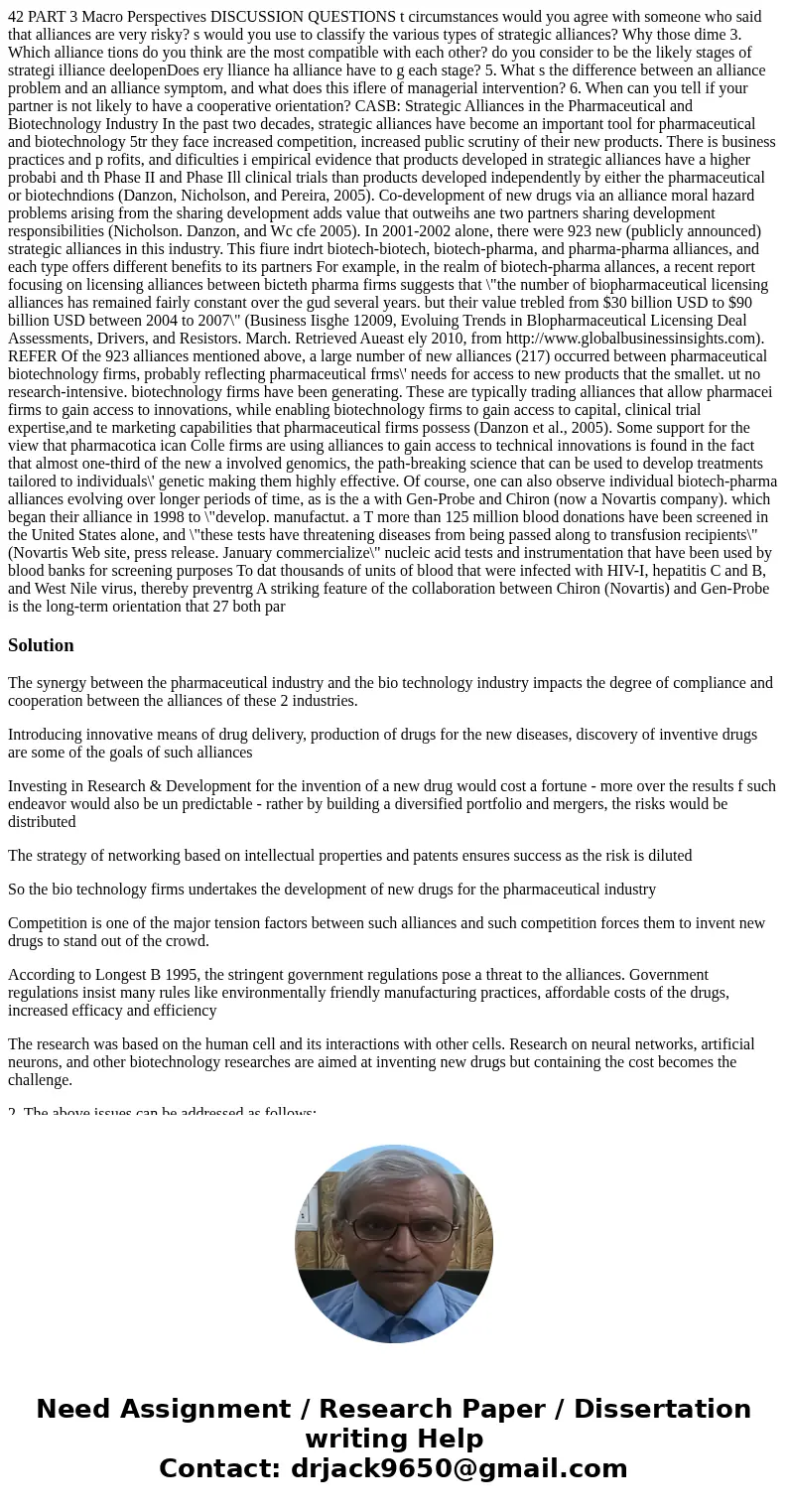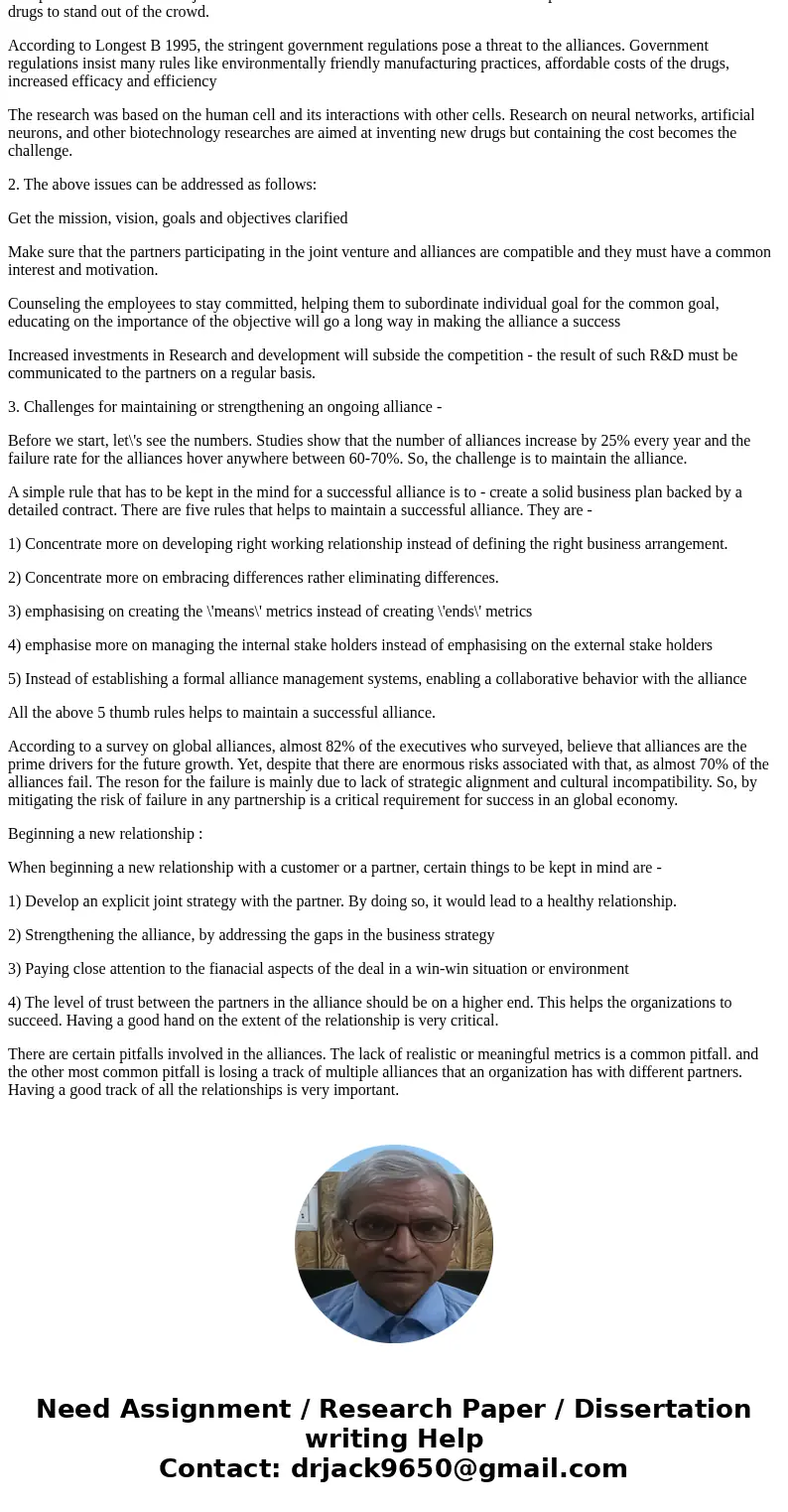42 PART 3 Macro Perspectives DISCUSSION QUESTIONS t circumst
Solution
The synergy between the pharmaceutical industry and the bio technology industry impacts the degree of compliance and cooperation between the alliances of these 2 industries.
Introducing innovative means of drug delivery, production of drugs for the new diseases, discovery of inventive drugs are some of the goals of such alliances
Investing in Research & Development for the invention of a new drug would cost a fortune - more over the results f such endeavor would also be un predictable - rather by building a diversified portfolio and mergers, the risks would be distributed
The strategy of networking based on intellectual properties and patents ensures success as the risk is diluted
So the bio technology firms undertakes the development of new drugs for the pharmaceutical industry
Competition is one of the major tension factors between such alliances and such competition forces them to invent new drugs to stand out of the crowd.
According to Longest B 1995, the stringent government regulations pose a threat to the alliances. Government regulations insist many rules like environmentally friendly manufacturing practices, affordable costs of the drugs, increased efficacy and efficiency
The research was based on the human cell and its interactions with other cells. Research on neural networks, artificial neurons, and other biotechnology researches are aimed at inventing new drugs but containing the cost becomes the challenge.
2. The above issues can be addressed as follows:
Get the mission, vision, goals and objectives clarified
Make sure that the partners participating in the joint venture and alliances are compatible and they must have a common interest and motivation.
Counseling the employees to stay committed, helping them to subordinate individual goal for the common goal, educating on the importance of the objective will go a long way in making the alliance a success
Increased investments in Research and development will subside the competition - the result of such R&D must be communicated to the partners on a regular basis.
3. Challenges for maintaining or strengthening an ongoing alliance -
Before we start, let\'s see the numbers. Studies show that the number of alliances increase by 25% every year and the failure rate for the alliances hover anywhere between 60-70%. So, the challenge is to maintain the alliance.
A simple rule that has to be kept in the mind for a successful alliance is to - create a solid business plan backed by a detailed contract. There are five rules that helps to maintain a successful alliance. They are -
1) Concentrate more on developing right working relationship instead of defining the right business arrangement.
2) Concentrate more on embracing differences rather eliminating differences.
3) emphasising on creating the \'means\' metrics instead of creating \'ends\' metrics
4) emphasise more on managing the internal stake holders instead of emphasising on the external stake holders
5) Instead of establishing a formal alliance management systems, enabling a collaborative behavior with the alliance
All the above 5 thumb rules helps to maintain a successful alliance.
According to a survey on global alliances, almost 82% of the executives who surveyed, believe that alliances are the prime drivers for the future growth. Yet, despite that there are enormous risks associated with that, as almost 70% of the alliances fail. The reson for the failure is mainly due to lack of strategic alignment and cultural incompatibility. So, by mitigating the risk of failure in any partnership is a critical requirement for success in an global economy.
Beginning a new relationship :
When beginning a new relationship with a customer or a partner, certain things to be kept in mind are -
1) Develop an explicit joint strategy with the partner. By doing so, it would lead to a healthy relationship.
2) Strengthening the alliance, by addressing the gaps in the business strategy
3) Paying close attention to the fianacial aspects of the deal in a win-win situation or environment
4) The level of trust between the partners in the alliance should be on a higher end. This helps the organizations to succeed. Having a good hand on the extent of the relationship is very critical.
There are certain pitfalls involved in the alliances. The lack of realistic or meaningful metrics is a common pitfall. and the other most common pitfall is losing a track of multiple alliances that an organization has with different partners. Having a good track of all the relationships is very important.


 Homework Sourse
Homework Sourse